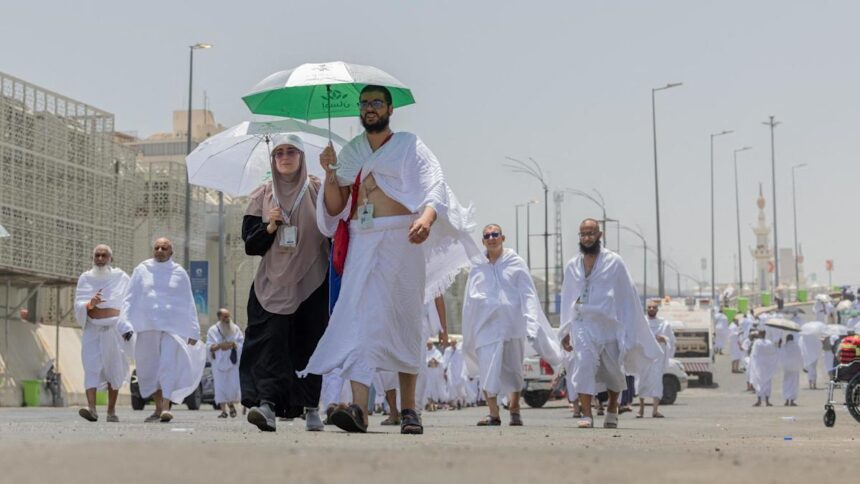Introduction
The 2025 Hajj pilgrimage has commenced with over 1.4 million Muslims gathering in Mecca, Saudi Arabia. Following last year’s tragic heat-related deaths of around 1,300 pilgrims, Saudi authorities have taken extensive precautions to ensure safety amid scorching temperatures forecasted to reach 44°C (111°F) Hajj 2025.
Enhanced Safety Measures for 2025 Hajj Hajj 2025
In response to last year’s heatwave fatalities, Saudi Arabia has significantly increased safety efforts. These include planting thousands of trees and installing more than 400 cooling units to mitigate the intense heat during the pilgrimage. The cooling system inside Mecca’s Grand Mosque is reported to be the largest in the world, offering much-needed relief to pilgrims. [Saudi Press Agency]
Additionally, shaded areas across pilgrimage sites have been expanded by 50,000 square meters (12 acres), and more rubberized, cooled roads have been constructed to reduce surface temperatures. These infrastructural improvements aim to enhance the overall comfort and safety of millions of pilgrims.
Strict Entry Regulations and Penalties
To control crowd numbers and ensure only registered pilgrims participate, Saudi officials have banned children under 12 from attending and are strictly enforcing entry rules. Unauthorized pilgrims face severe penalties including a $5,000 fine and a 10-year ban on entering Saudi Arabia. Already, over 269,000 unregistered individuals have been stopped from entering Mecca.
Last year, 80% of heat-related deaths occurred among unregistered pilgrims who lacked access to air-conditioned accommodations and transportation, highlighting the critical importance of these regulations.
Heat Mitigation Guidelines for Pilgrims
The Saudi Health Ministry has urged pilgrims to take precautionary measures against the extreme heat, such as avoiding sun exposure from 10:00 AM to 4:00 PM, using umbrellas for shade, and drinking plenty of water regularly. Pilgrims are also advised to wear appropriate clothing in line with religious guidelines and stay vigilant about their health. [World Health Organization]
Technological Innovations in Crowd and Heat Management
Artificial intelligence (AI) is being deployed to manage the crowds and monitor safety using a fleet of drones. These AI-powered drones help authorities oversee the vast tent city of Mina, where pilgrims stay before moving to Mount Arafat for the pivotal day of the pilgrimage.
Such technology aims to prevent accidents and improve emergency responses, learning from past tragedies like the 2015 Mina stampede that resulted in over 2,300 deaths. [BBC Report on Mina Stampede]
The Religious Significance of Hajj
Hajj is one of Islam’s five Pillars and a mandatory pilgrimage for all physically and financially capable adult Muslims. The rituals include wearing Ihram, circling the Kaaba, walking between Safa and Marwa hills, and standing at Mount Arafat where Prophet Muhammad delivered his final sermon. [Britannica – Hajj Overview]
Conclusion
Saudi Arabia’s comprehensive safety measures and use of technology in the 2025 Hajj demonstrate a committed effort to prevent heat-related deaths and ensure a safe pilgrimage for millions. Pilgrims are encouraged to adhere strictly to guidelines to protect themselves during this sacred journey.
For more updates on Hajj and travel safety, visit Our Hajj Safety Guide 2025.


